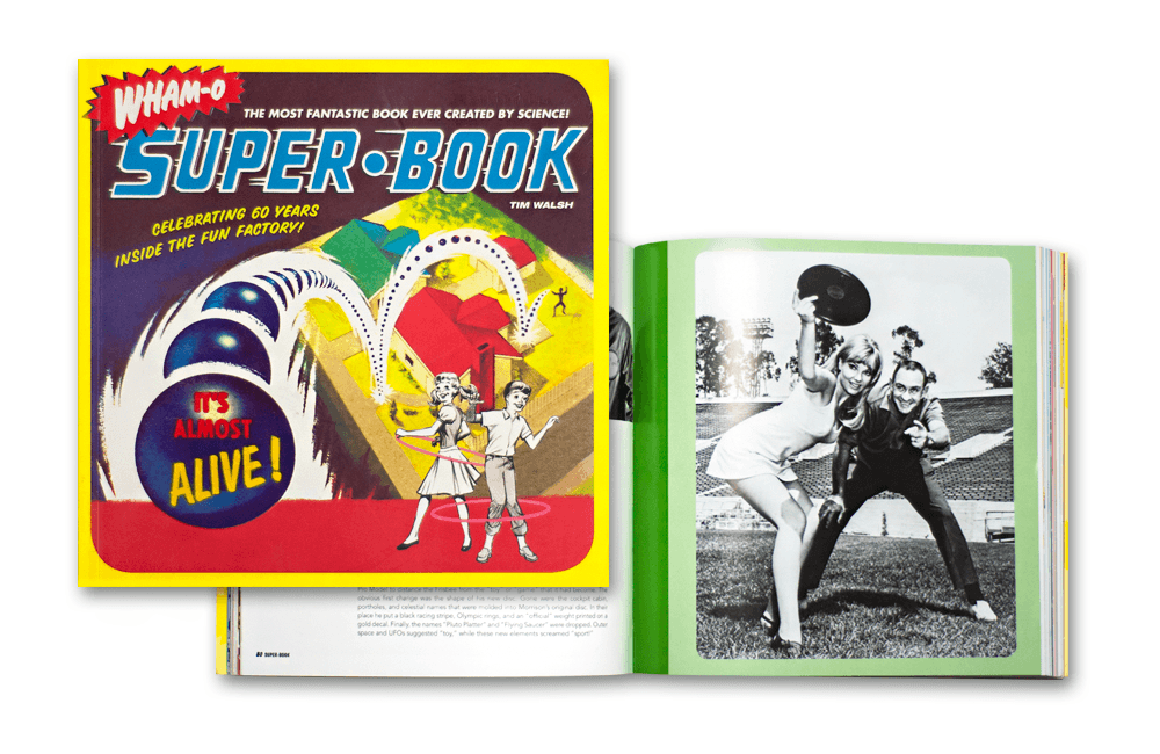While I was in the research and planning phase for my book on the history of the Easy-Bake Oven, I considered including a section on the various “knock-offs” that were produced by other toy companies in an attempt to capitalize on the popularity of Kenner’s toy oven. Although that chapter didn’t make it into the book, it’s an interesting topic – there were a number of interesting alternative baking products from companies like Argo Industries, Coleco, Topper Toys, and WHAM-O.
Yes, that’s correct, WHAM-O, the company behind numerous pop culture hits, including Silly String, Hacky Sack, and my personal favorite, the Slip ‘n Slide. In 1998, the company procured licensing agreements from Nestle, Kraft and Baskin-Robbins to release a short-lived line of food activity toys, including the JELL-O Frozen Treat Maker and the Chuck E. Cheese’s Pizza Factory. This detour into the world of food play toys piqued my interest and led me to discover the WHAM-O Super Book – Celebrating 60 Years Inside the Fun Factory! by Tim Walsh.
Walsh’s previous editorial endeavour, Timeless Toys – Classic Toys and the Playmakers Who Created Them is a staple on my toy history bookshelf, so I was excited to see what he’d do in a 181-page book devoted to the history of a single company. Boy, does he deliver!
The book deftly chronicles the first 60 years of the California toy company’s existence. Buoyed by interviews with one of WHAM-O’s two original founders, Rich Kneer, and his daughter Lori, Walsh provides first-person accounts behind the development, testing and marketing behind some of the company’s most trend-setting products, including the Hula Hoop, Frisbee and Super Ball.
A large part of WHAM-O’s successful development can be attributed to the family-style atmosphere of the company and the strong relationship between Kneer and his co-founder, Arthur “Spud” Melin. Walsh effectively weaves the theme of family and friendship throughout the book, culminating with the sale of the company in 1982, after 32 years.
Chapters are loosely organized based on the type of products that WHAM-O produced, including sporting goods, water toys, and stuff sold in those over-the-top ads seen in the back of comic books. Pouring over these chapters makes one realize the true depth and breadth of the company’s product line. WHAM-O not only set trends but also was able to adapt to the ever-changing marketplace – nimble enough to put out products in an on-going attempt to capture the attention (and $$$) of the general public.
Of course, no toy company has a 100% success rate, and this fact is half the fun in the book. Walsh doesn’t white-wash WHAM-O’s marketplace misses, but rather offers them up as proof positive that the company was willing to take risks and even indulge in some of the head-scratching whims of the two founders.
For the visually inclined like me, the book is chock full of product photography, illustrations and vintage advertising. WHAM-O tended to pile on the superlatives in their advertising in an often sensationalistic manner and the book runs with this, right down to its cover: “The most fantastic book ever create by science!” and “It’s almost alive!”
Now, if you’ll excuse me, I need to make sure my WHAM-O Instant Fish are fed and then indulge my creativity using the “fascinating volcanic-action” of my WHAM-O Magic Window.

